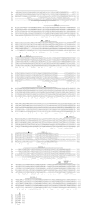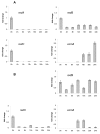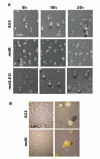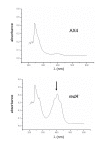The P450 oxidoreductase, RedA, controls development beyond the mound stage in Dictyostelium discoideum
- PMID: 18218133
- PMCID: PMC2257935
- DOI: 10.1186/1471-213X-8-8
The P450 oxidoreductase, RedA, controls development beyond the mound stage in Dictyostelium discoideum
Abstract
Background: NADPH-cytochrome-P450 oxidoreductase (CPR) is a ubiquitous enzyme that belongs to a family of diflavin oxidoreductases and is required for activity of the microsomal cytochrome-P450 monooxygenase system. CPR gene-disruption experiments have demonstrated that absence of this enzyme causes developmental defects both in mouse and insect.
Results: Annotation of the sequenced genome of D. discoideum revealed the presence of three genes (redA, redB and redC) that encode putative members of the diflavin oxidoreductase protein family. redA transcripts are present during growth and early development but then decline, reaching undetectable levels after the mound stage. redB transcripts are present in the same levels during growth and development while redC expression was detected only in vegetative growing cells. We isolated a mutant strain of Dictyostelium discoideum following restriction enzyme-mediated integration (REMI) mutagenesis in which redA was disrupted. This mutant develops only to the mound stage and accumulates a bright yellow pigment. The mound-arrest phenotype is cell-autonomous suggesting that the defect occurs within the cells rather than in intercellular signaling.
Conclusion: The developmental arrest due to disruption of redA implicates CPR in the metabolism of compounds that control cell differentiation.
Figures







Similar articles
-
LagC is required for cell-cell interactions that are essential for cell-type differentiation in Dictyostelium.Genes Dev. 1994 Apr 15;8(8):948-58. doi: 10.1101/gad.8.8.948. Genes Dev. 1994. PMID: 7926779
-
Gdt2 regulates the transition of Dictyostelium cells from growth to differentiation.BMC Dev Biol. 2004 Jul 5;4:8. doi: 10.1186/1471-213X-4-8. BMC Dev Biol. 2004. PMID: 15236669 Free PMC article.
-
Molecular cloning, bacterial expression and functional characterisation of cytochrome P450 monooxygenase, CYP97C27, and NADPH-cytochrome P450 reductase, CPR I, from Croton stellatopilosus Ohba.Plant Sci. 2014 Dec;229:131-141. doi: 10.1016/j.plantsci.2014.09.001. Epub 2014 Sep 16. Plant Sci. 2014. PMID: 25443840
-
Purification, cDNA cloning and functional expression of NADPH-cytochrome P450 reductase from Centaurium erythraea cell cultures.Plant Biol (Stuttg). 2009 May;11(3):300-6. doi: 10.1111/j.1438-8677.2008.00137.x. Epub 2008 Nov 19. Plant Biol (Stuttg). 2009. PMID: 19470102
-
A user's guide to restriction enzyme-mediated integration in Dictyostelium.J Muscle Res Cell Motil. 2002;23(7-8):597-604. doi: 10.1023/a:1024494704863. J Muscle Res Cell Motil. 2002. PMID: 12952058 Review.
Cited by
-
Characterization of glutathione S-transferase enzymes in Dictyostelium discoideum suggests a functional role for the GSTA2 isozyme in cell proliferation and development.PLoS One. 2021 Apr 28;16(4):e0250704. doi: 10.1371/journal.pone.0250704. eCollection 2021. PLoS One. 2021. PMID: 33909675 Free PMC article.
-
A terpene synthase-cytochrome P450 cluster in Dictyostelium discoideum produces a novel trisnorsesquiterpene.Elife. 2019 May 7;8:e44352. doi: 10.7554/eLife.44352. Elife. 2019. PMID: 31063135 Free PMC article.
References
Publication types
MeSH terms
Substances
LinkOut - more resources
Full Text Sources
Molecular Biology Databases

